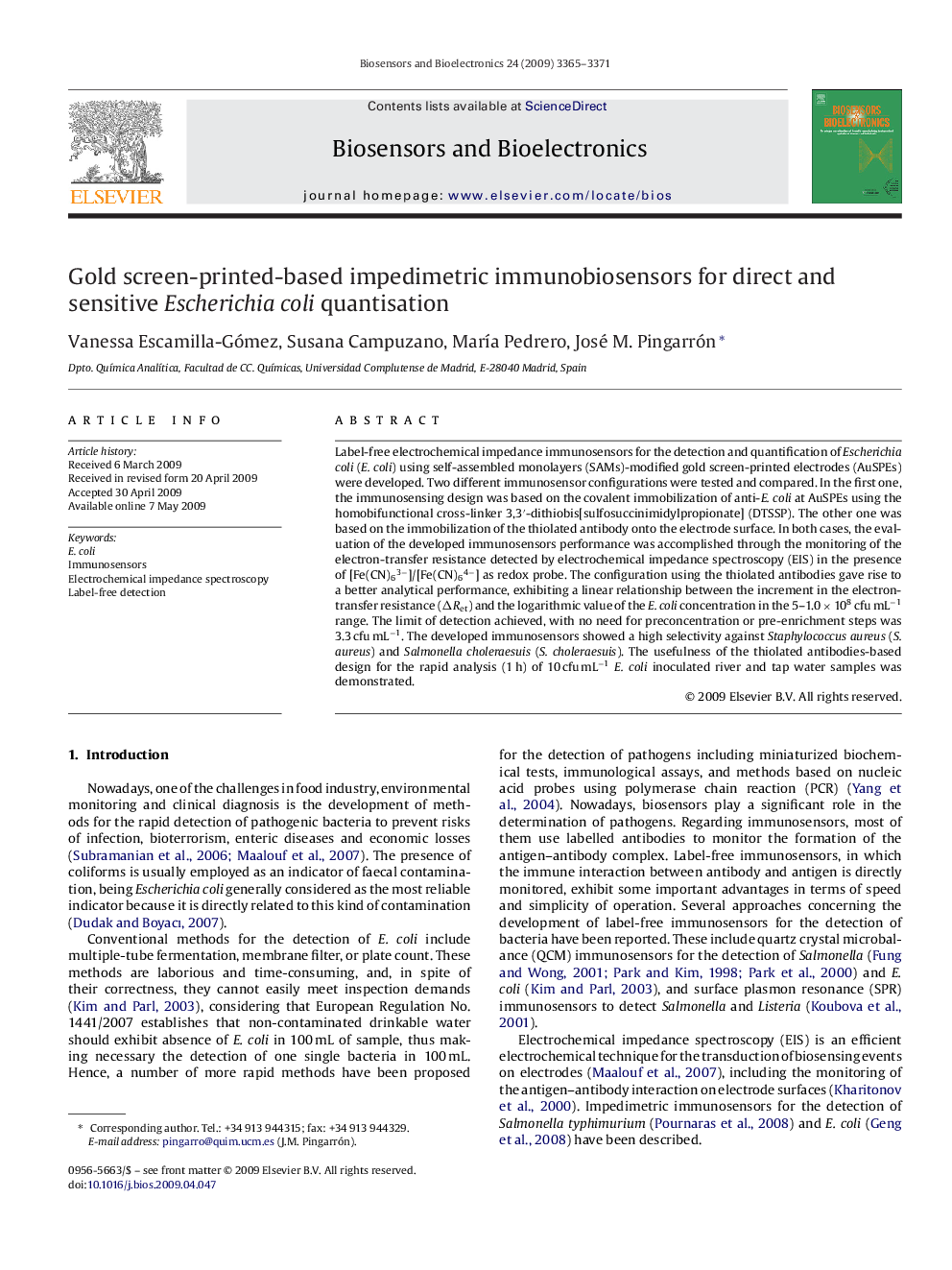| Article ID | Journal | Published Year | Pages | File Type |
|---|---|---|---|---|
| 868662 | Biosensors and Bioelectronics | 2009 | 7 Pages |
Label-free electrochemical impedance immunosensors for the detection and quantification of Escherichia coli (E. coli) using self-assembled monolayers (SAMs)-modified gold screen-printed electrodes (AuSPEs) were developed. Two different immunosensor configurations were tested and compared. In the first one, the immunosensing design was based on the covalent immobilization of anti-E. coli at AuSPEs using the homobifunctional cross-linker 3,3′-dithiobis[sulfosuccinimidylpropionate] (DTSSP). The other one was based on the immobilization of the thiolated antibody onto the electrode surface. In both cases, the evaluation of the developed immunosensors performance was accomplished through the monitoring of the electron-transfer resistance detected by electrochemical impedance spectroscopy (EIS) in the presence of [Fe(CN)63−]/[Fe(CN)64−] as redox probe. The configuration using the thiolated antibodies gave rise to a better analytical performance, exhibiting a linear relationship between the increment in the electron-transfer resistance (ΔRet) and the logarithmic value of the E. coli concentration in the 5–1.0 × 108 cfu mL−1 range. The limit of detection achieved, with no need for preconcentration or pre-enrichment steps was 3.3 cfu mL−1. The developed immunosensors showed a high selectivity against Staphylococcus aureus (S. aureus) and Salmonella choleraesuis (S. choleraesuis). The usefulness of the thiolated antibodies-based design for the rapid analysis (1 h) of 10 cfu mL−1E. coli inoculated river and tap water samples was demonstrated.
